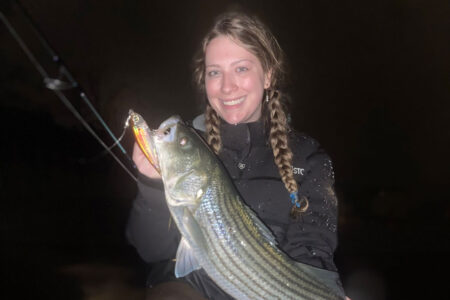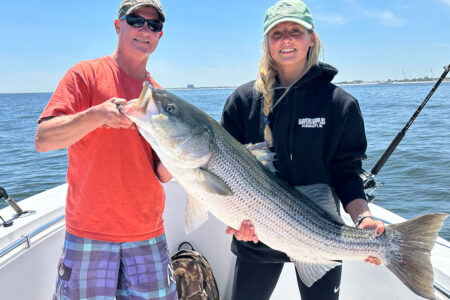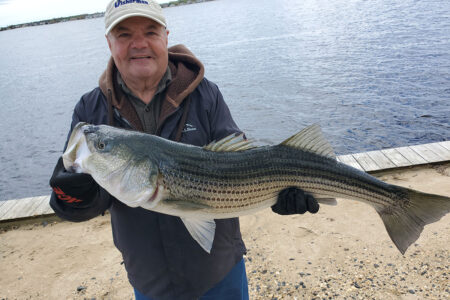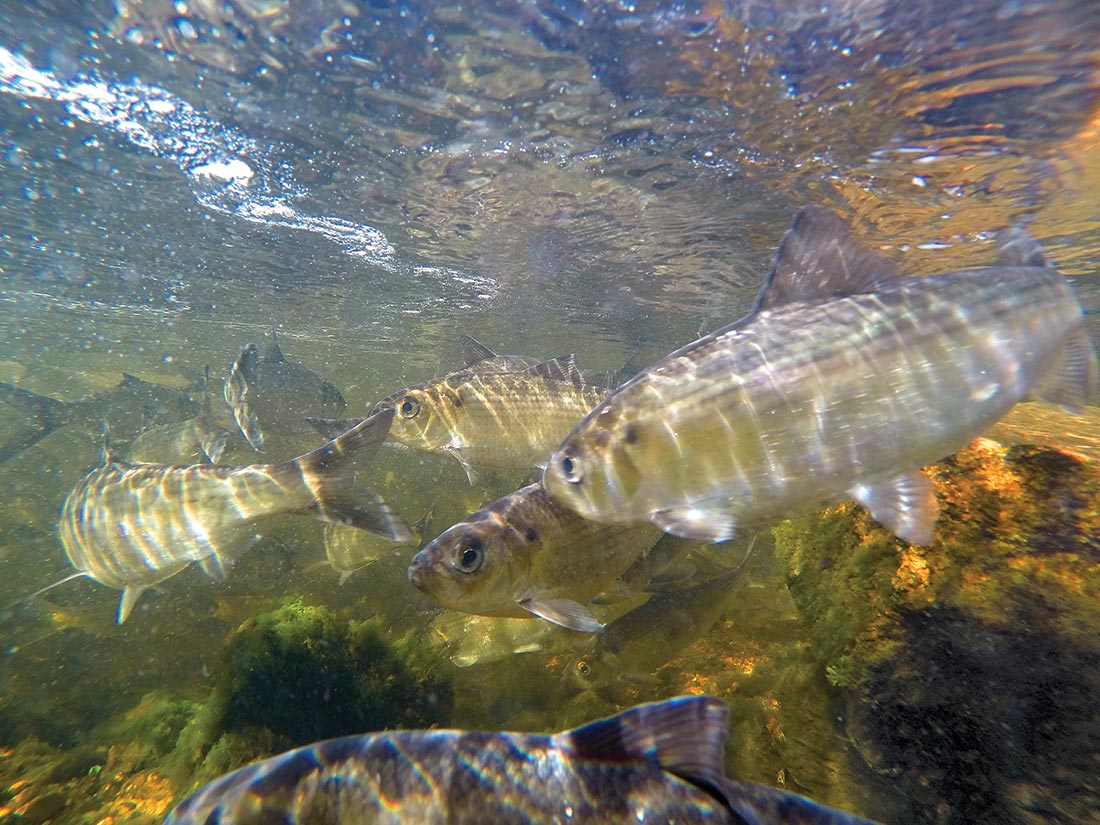
Herring run methods, new and old, to put you on the stripers this month.
A lot has changed in the 20 years that I’ve been fishing for striped bass. In fact, there was a time when the majority of surfcasters considered it a waste of time to fish artificial lures of any kind around the herring runs. The simple reason being that it was still legal to use live or dead river herring at that time—and most wouldn’t fish without fresh bait. My fishing partner at that time was my friend Dave Parrillo and we wasted countless hours netting herring to fill the giant livewell we had under his deck. I say ‘wasted’ because we spent more time getting the bait than we did actually using it. (And if you ask me, dealing with keeping them alive and carting them around was more trouble than it was worth—although there’s really nothing like that committed strike that comes with fishing a live and athletic bait!)
If my memory serves, it was the spring of 2007 when a moratorium was imposed on the harvest of river herring in New England and you’d have thought Santa Clause had been thrown in jail for killing the Easter Bunny. Social media was in its infancy at that time, but the message boards were lit up with tearful posts about how spring fishing had been ruined by these new regs. It’s funny how tightly we hang on to traditional methods—and that’s especially true of surfcasters because what we do is so rooted in tradition, lessons passed from grandfathers and sharp old-timers.
Kicking It Old School
I remember talking to the late John ‘Habs’ Haberek around that time and he told me that he had been fishing a particular herring run on Martha’s Vineyard for years using plugs almost exclusively. He described this spot as a long and narrow neck of shallow water that finally pinched down to the mouth of a stream. The herring would run this shallow flat in small schools and the bass would charge up into the skinny water to take advantage. He said that they used to catch some really nice fish on Danny plugs in that spot, slow-rolling them in from deeper water—swimming them toward the mouth of the run. Shallow water should never be considered a detriment to your fishing, especially where there’s a reliable source of baitfish. The shallow water is actually an advantage to the predatory fish because it limits the escape options of the bait.
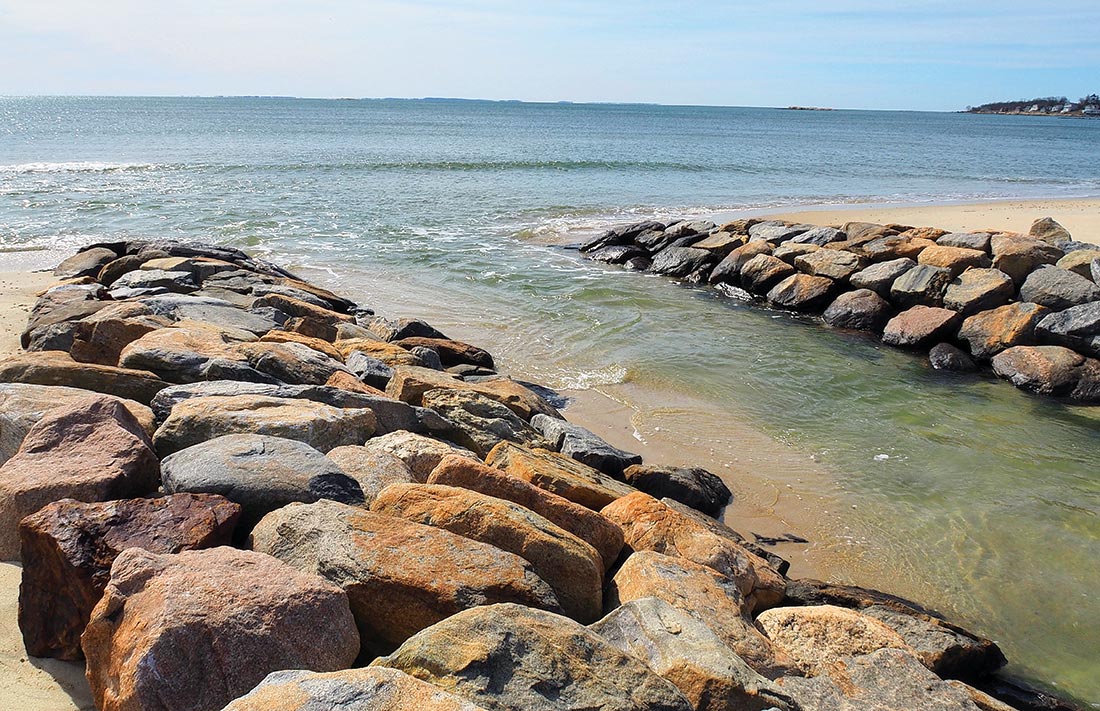
But I will caution you about your approach. When stripers are way up shallow like this, your approach to the water is everything—even if you’re on the bank. Don’t go running up to the water’s edge, don’t be waving a light around like Luke Skywalker, don’t splash into the water and start power-wading to your favorite spot. You have to go slow, you have to try to be quiet and limit the amount of vibration you’re giving off. These fish feel instinctively cautious—it’s probably left over from the time when they were small enough to be preyed upon. When the ceiling and floor start to close in on them, they are much more likely to spook and head for deeper water if anything doesn’t feel right. On top of that, your oafish actions may also cause the herring to measure the risks and hold off running the stream until things quiet down. This is not some offhand opinion I cooked up to fill space, this is fact, and it 100 percent will make a difference in your shallow water fishing. Wade quietly, slowly, if you must use your light, turn your back to the water. You want everything to seem normal, as if you weren’t there, that’s when you’ll do the best.
I have spoken with Andrew Nichols of the Middletown, CT shop Fishin’ Factory 3 about fishing the herring runs along the Connecticut River every year for about the last decade. I have a tremendous amount respect for Andrew; the guy knows his stuff and he’s super passionate about fishing. He’s all about the approach as well, keeping quiet and going slowly around the runs. His favorite plug in these situations is the Red Fin. He says the Red Fin swims shallow enough that you can fish it in even super-skinny water and he also likes the fact that you can swim it fast or slow without sacrificing action. This is one of those situations where keeping an unloaded Red Fin in the bag is a good idea; they don’t cast well, but they swim right up on top leaving a wake—take the rear hook off to get a wider, splashier swim. While the Danny is kind of a one-trick pony—slow or slower—the Red Fin can be reeled at a variety of speeds, which can be the key to hooking up, because most of the herring heading up the run are not wounded and floundering on the surface.
A Brand-new Bag
The technology of fishing lures seems to evolve faster than the iPhone, and that holds true for plugs used around the herring runs as well. Something that was never really considered in the past is what is actually natural in the setting of a herring run. The classic herring run swimmers were all slow, wooden swimmers. Then we added the Red Fin, which is more versatile but still not up to task of replicating nature.
So what is natural in a herring run setting? I have spent a lot of time around herring runs, fishing, netting herring and just observing. I think too many of us get lulled into the lazy swirl of the herring waiting at the bottom of the fish ladder. If you spend more time where the run opens up to the estuary or ocean (where the bass are) then you’ll see a very different attitude. The takeaway, for me, is that these herring are fast, agile and super athletic. Don’t be fooled into thinking the stripers want slow or can’t run down a fast-moving lure. If that were true, these fish would never eat.
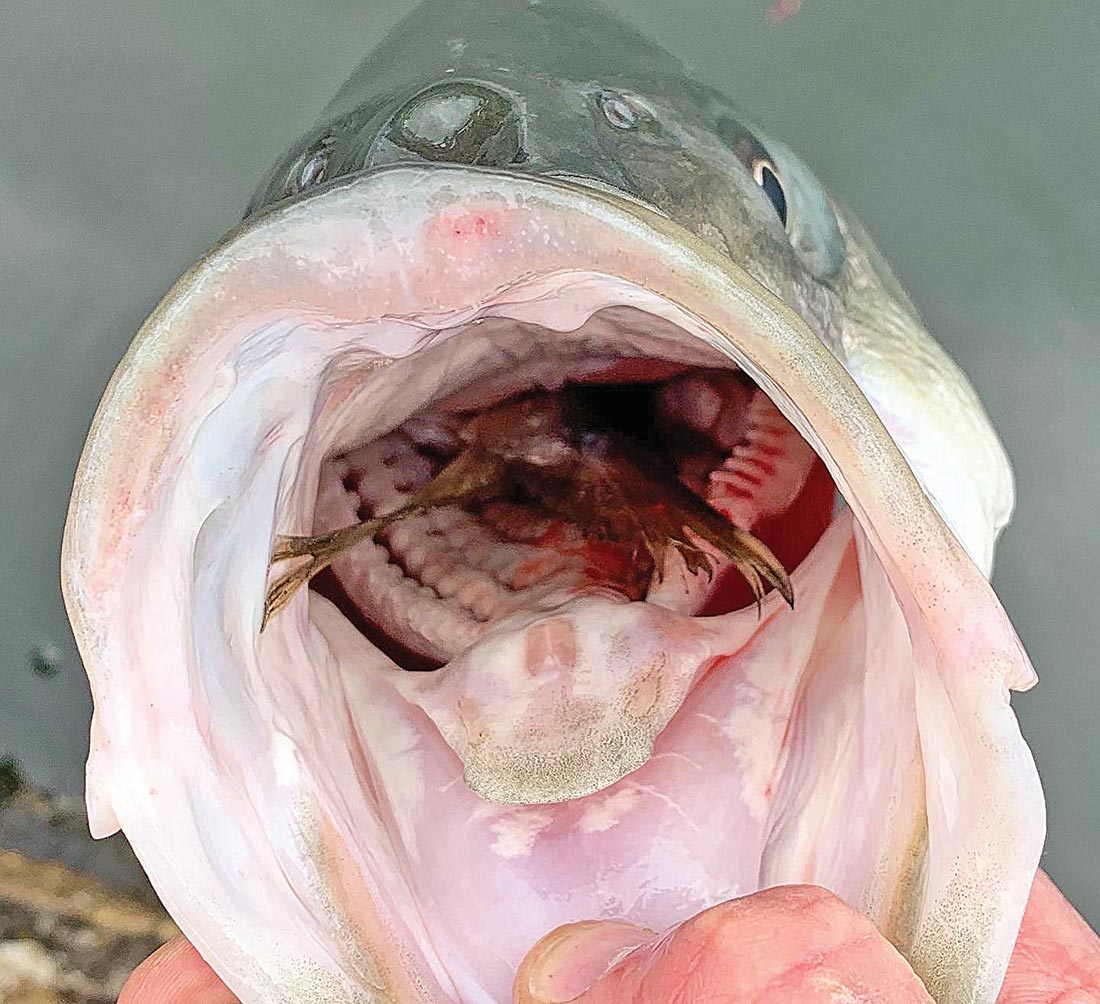
My eyes first opened to this ‘need for speed’ one night fishing a shallow run in Buzzards Bay. I was fishing a Danny, seeing no results, then on one cast it fouled so I burned it in to fix it. It was skittering on its side and I reeled it right into the mouth of the run. When it was about 10 feet outside the mouth, what appeared to be a decent fish blew it out of the water but missed. I rummaged through my bag for something I could fish fast but all I had were metal lips and a pencil popper. I’ve written about this before, but I ended up using the pencil in the middle of the night, fishing it hard and fast. It was the only plug that caught fish.
The first lure that changed the game was the Sebile Magic Swimmer. Not only does it look just like a herring, but it can be fished at literally any speed, from a crawl to a barracuda rip. I could just say that fishing this plug and varying your retrieve speed around the runs will catch you some fish, and that would be true and solid advice. But I can take it a few steps further. In the quiet darkness of an estuary you can sometimes hear the herring coming, they sound like subtle, rhythmic splashes. You may also hear them being chased. This is when the Magic Swimmer really proves its worth; I like the 6.5-inch, slow-sink version and I cast it beyond the commotion and reel fast through it. The fish usually can’t pass it up. When you think about it, this triggers a flight response from the bass; they see this herring moving faster than all the others and the bass get competitive, they just can’t let it get away. The other time that the Magic Swimmer draws herring attention is right at first light, fished just fast enough to leave a splashy wake on the surface—try it. Other plugs in this genre that draw strikes are the Savage Gear 4 Play and I’ll bet the Fish Lab Mack Attack swimmer will crush as well.
Soft plastics gain more prominence in striper fishing every year and as more freshwater anglers crossover into the striper fishing world we’re seeing a lot more soft plastic cross-pollination. I was talking to Max Finch, one of the employees at Fisherman’s World in Norwalk, CT and he was telling me that he’d been catching some fat fish in the 30-inch class in early April this year. He said he was checking the runs every day for bass and then one day, they just showed up. He said he was having great success on the 5-inch Z-Man DieZel MinnowZ rigged on a 3/4-ounce Headlockz Jig Head. In keeping with what I’ve been saying here, he was fishing these paddletail shads fast with lots of twitches, trying to make them look like herring running and gunning for the run—the fish couldn’t resist.
Here Comes the Sun
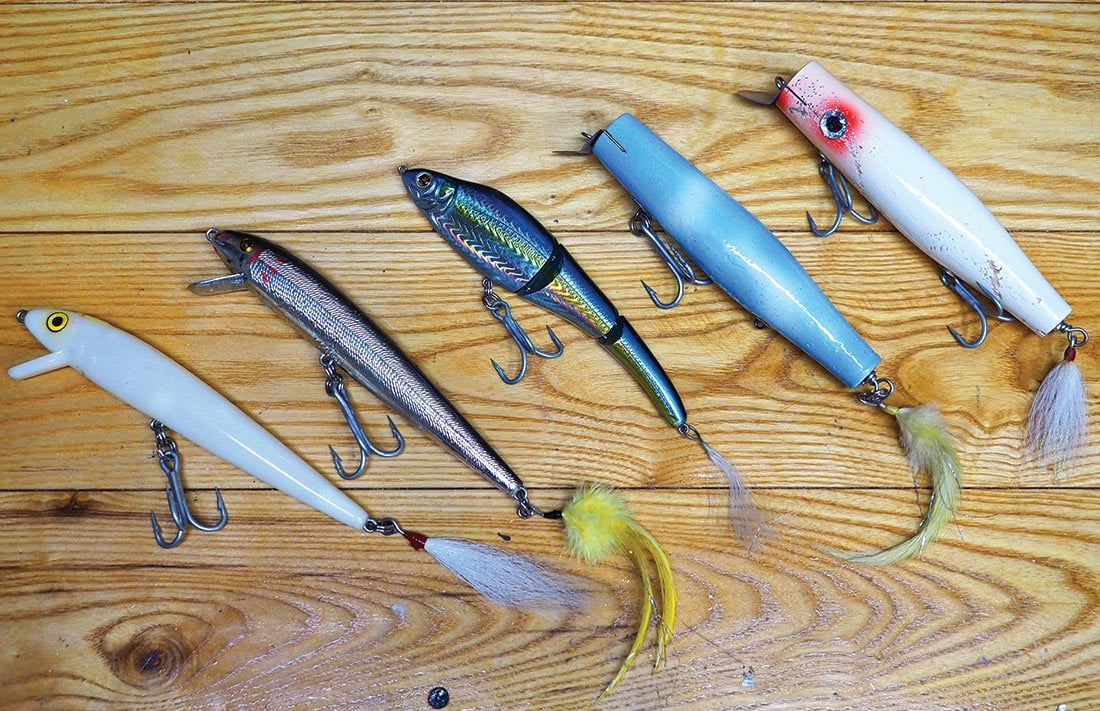
Daytime fishing at the runs can go either way; I know one run where the herring only run at night—I find that very interesting but it’s true. I’ve been looking at that run for 17 years now and I’ve only seen daytime herring in there once—ONCE! If I’m being honest, I rarely give a herring stream more than a few casts in daylight. It’s only rarely paid off. The plug that has earned the most action for me is the 7-inch Lil’ Doc, and at that point I’m just bombing it way out there and fishing near the run. I’m much more likely to pick a narrow spot upriver from a herring run and fish topwater plugs, Dannys and Magic Swimmers, looking for bass traveling in and out of the estuary than I am concentrating on the runs. For me, fishing the runs is a nighttime and first light thing. I feel like the bass are way more likely to move into the shallow approach to a herring run under the cloak of darkness. The only exceptions would be a run that dumps out directly into deep water, like the run in the Canal or a run that features a dam with a ladder. Other than that, I’m looking for spots that look fishy in daylight rather than a possible pile of bait.
Day or night, a herring run is always going to be a good place to start, particularly when you know there are bigger fish in the area. It’s – probably – genetically impossible for these bigger fish migrating in from the south to ignore a consistent source of large baitfish. And the methods I’ve laid out will cover the gamut of herring ‘attitudes’ from exhausted and injured, to frantic and determined to spawn. As with anything related to surf fishing, the great equalizer is going to be time spent. If you pour yourself into it, you will have success. Good luck.

